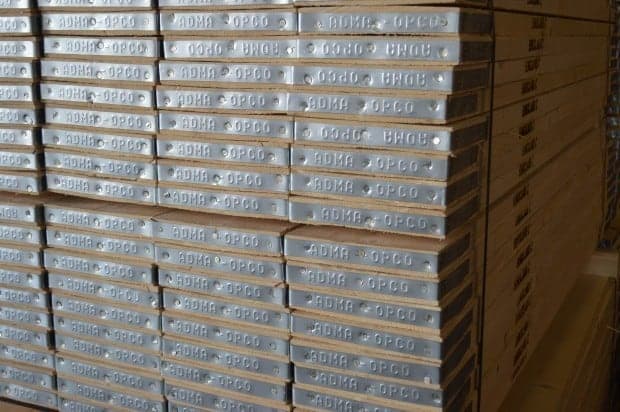Christian Brash from John Brash & Co. asks why sales of Grade A scaffolding boards are on the up when BS2482:2009 was supposed to be their death knell

The introduction of BS2482:2009 marked a watershed in the scaffolding industry, with new rules on board sizing, timber quality, board construction and the grading of scaffolding boards.
It replaced a British Standard that was nearly 30 years old. It introduced a new grade for 38mm boards – a 1.2m span and revised the grading requirements for 38mm boards with a 1.5m span and 63mm boards. The new 1.2m spam 38mm board was to ensure a safe and practical standard for what was the Grade A board
We thought it would spell the end of unregulated scaffold board, and for a while we were right because sales nosedived. However, Grade A boards are making a rather worrying comeback. But why is that?
We can only assume that it is because of three possible reasons.
The first is that BS2482:2009 is now six years old and although it’s an established standard, it’s probably long been forgotten. Despite the importance of these standards, I’ll bet there are very few scaffolders who can rattle off all the British Standards and specifications for the industry. And why should they? They’re all busy trying to earn a living, and paperwork is sometimes an inconvenience. There’s no point getting bent out of shape about it, as it’s just a fact of life.
The second is more concerning, as it’s clear that the standard is being ignored by some manufacturers. Again, as it’s been a while since BS2482:2009 came in, it gives some manufacturers scope to either pass off substandard boards as the real McCoy or blatantly sell Grade A boards to a section of the market that couldn’t care less, as a board is a board is a board.
That’s the Achilles heel of the British Standards Institute, which oversees the introduction of all these standards, which are designed to improve quality, health & safety and a range of other benefits. There’s no active enforcement of the standard for scaffold boards, and it’s down to individuals or a company to use a board that is ‘fit for purpose’.
It seems that the only time the authorities really get involved is when there’s an accident. And then it’s too late. Can you prove a Grade A is ‘fit for purpose’ and is graded to take the loads you require?
The final reason could be the name. For many people, the term “Grade A” indicates the best quality, but nothing could be further from the truth when it comes to scaffold boards. So it’s easy to see why the name may serve to confuse some people buying scaffold boards.
When you drill down even further, it seems that Grade A boards are flourishing because it comes down to a simple choice between price and safety.
We know that the industry is ruthlessly price competitive and that a few quid can be the difference between winning and losing a contract. Is buying the cheapest possible boards that don’t pass any safety standard tests the answer?
That’s not a question we can answer. As a manufacturer, all we can do is make the best boards we can that do comply to British Standards and hope that the National Access and Scaffolding Confederation (NASC) and the Health and Safety Executive keep banging the drum to promote safe working environments.


